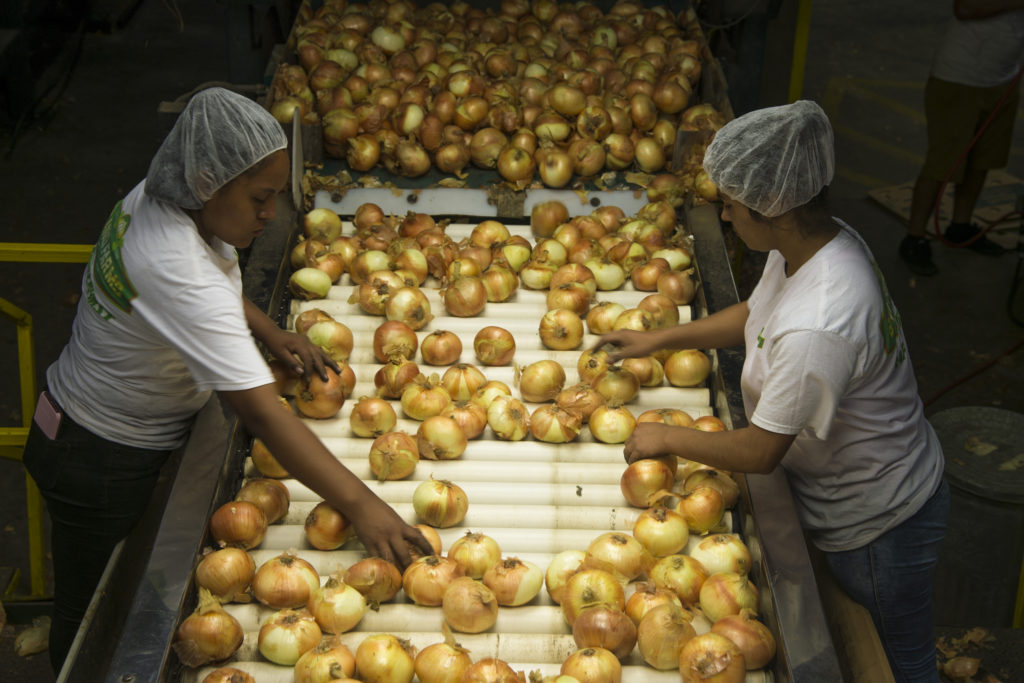
Since 2015, the Food Safety Outreach Program (FSOP) has provided small and mid-sized farms, beginning and socially disadvantaged farmers, small processors, and small-scale wholesalers with the training they need to comply with new food safety requirements included in the 2011 Food Safety Modernization Act.
To reach the aforementioned audiences, the program has largely focused on building partnerships and providing grant funding to independent, community based organizations and 1862, 1890, 1994 land-grant universities, as well as Alaska Native and Native Hawaiian-Serving Institutions (ANNH), Hispanic-Serving Institutions (HSI), and Hispanic-Serving Agricultural Colleges and Universities (HSACU). Today there are over 100 land-grant institutions. In 1862, Congress passed the first Morrill Act, which provided for the establishment of a land-grant institution in each state to offer education on a number of topics, including agriculture. In 1890, a second Morrill Act was passed, which allowed for the establishment of Black land-grant universities across each of the previously segregated Southern states. In 1994, the Elementary and Secondary Education Act conferred land-grant status on 29 Native American tribal colleges across the country.
NSAC was invited in September to present an analysis of racial equity impact data for FSOP based on program awards and communities served to the USDA’s National Institute of Food and Agriculture (NIFA), which administers the program. They were interested in learning about the successes and shortfalls of the program in order to improve equitable outcomes within it. Despite being a fairly new program, NIFA has already taken strides to ensure the program benefits farmers of color.
In 2019, Dr. Jodi Williams, the national program leader for FSOP, spearheaded the inclusion of a Collaborative Engagement Supplement component within the program RFA, which offers an additional $150,000 to recipients that collaborate with 1890s, 1994s, Insular Areas, ANNH, or HSACU in order to increase outreach to underserved farmers of color. During that year, about $1.6 million was awarded in supplements to four 1862s that partnered with 1890s, HSIs, and HSACUs. Since then, the supplement has also been adopted into the 2021-2022 RFA for the Agriculture and Food Research Initiative Foundational and Applied Science Program.
Data Analysis Summary
Regional Centers
In 2015, the first recipients of FSOP funding were the Southern Regional Center at the University of Florida and the Western Regional Center at Oregon State University, both 1862 land-grant institutions. The regional centers were established to train and coordinate food safety educators, since in 2015 and 2016 most applicants did not have FSMA-specific training. The four regional centers received $7.2 million in funding in 2015 and 2018, comprising half of the total amount of money awarded to 1862s from 2015-2019.

Diversification of Institutional Applicants
From 2015-2019, only seven 1890s and zero 1994, ANNH, HSI, and HSACU institutions received funding, compared to sixty-one 1862s. There are some instances where HSIs and 1862s are the same institution; that was not analyzed as part of this effort. However, there is clearly a gap to be filled in the pool of applicants. Comprehensive data on applicants was unavailable, so further inquiry is needed to understand the source of this gap in funding distribution across eligible institutions.
One opportunity to increase the balance of awards across land-grants could be to leverage the partnerships regional centers hold and encourage them to host virtual or in-person networking and listening sessions. Listening sessions with institutions and organizations that are interested but haven’t applied, or haven’t been successful, but have applied could help identify technical assistance needs, concerns with the application, and opportunities to collaborate.
Total Funding Across Applicants
We also looked at overall funding, including land grants and organizations. While the majority of FSOP funding is given to land grant universities, independent organizations are also eligible for funding. Full demographic information was not available from USDA, but in order to give more context to who these independent recipients are, we looked into their mission statement and stated membership and communities served to estimate classifications. This data represents an estimate based on available information – more disaggregated data from USDA would enable deeper analysis.
From 2015-2019, Native Hawaiian-serving independent organizations received the least amount of funding; 1862s were awarded the most. In comparison to the 1890s, 1862s received about $12.6 million more in funding. As mentioned previously, regional centers received half of the total amount awarded to 1862s. These centers are required to collaborate with USDA-defined “minority serving institutions” in their region. It is easier for the Southern Regional Center to collaborate with 1890 universities because that is where they are concentrated. Whereas in the North and West, there has been less collaboration, but the opportunity exists for increasing partnerships with 1994s, HSIs, HSACUs, and ANNH institutions.
Given that some information on subawards and partnerships is not available on the public database, USDA has shared that more collaboration is occurring that may not be explicitly reflected in the data. Moving forward, including language in the RFA to allow for people of color-led community based organizations to receive the Collaborative Engagement Supplement could improve outreach to underserved communities.

What can NSAC and NIFA do to ensure underserved farmers are served by food safety training and outreach through FSOP?
This kind of analysis and discussion is a model for how organizations like NSAC and agencies like NIFA at USDA can work in partnership to address accountability and equity within programs. As a grassroots coalition, we work to bring our members’ and farmers’ voices to the policy table, including directly to USDA about the challenges organizations are facing with applying for funding, in addition to supporting outreach efforts. NIFA can and should ask for more robust demographic information from applicants, continue being open to feedback, and continue workshopping how to improve who benefits from the program.



